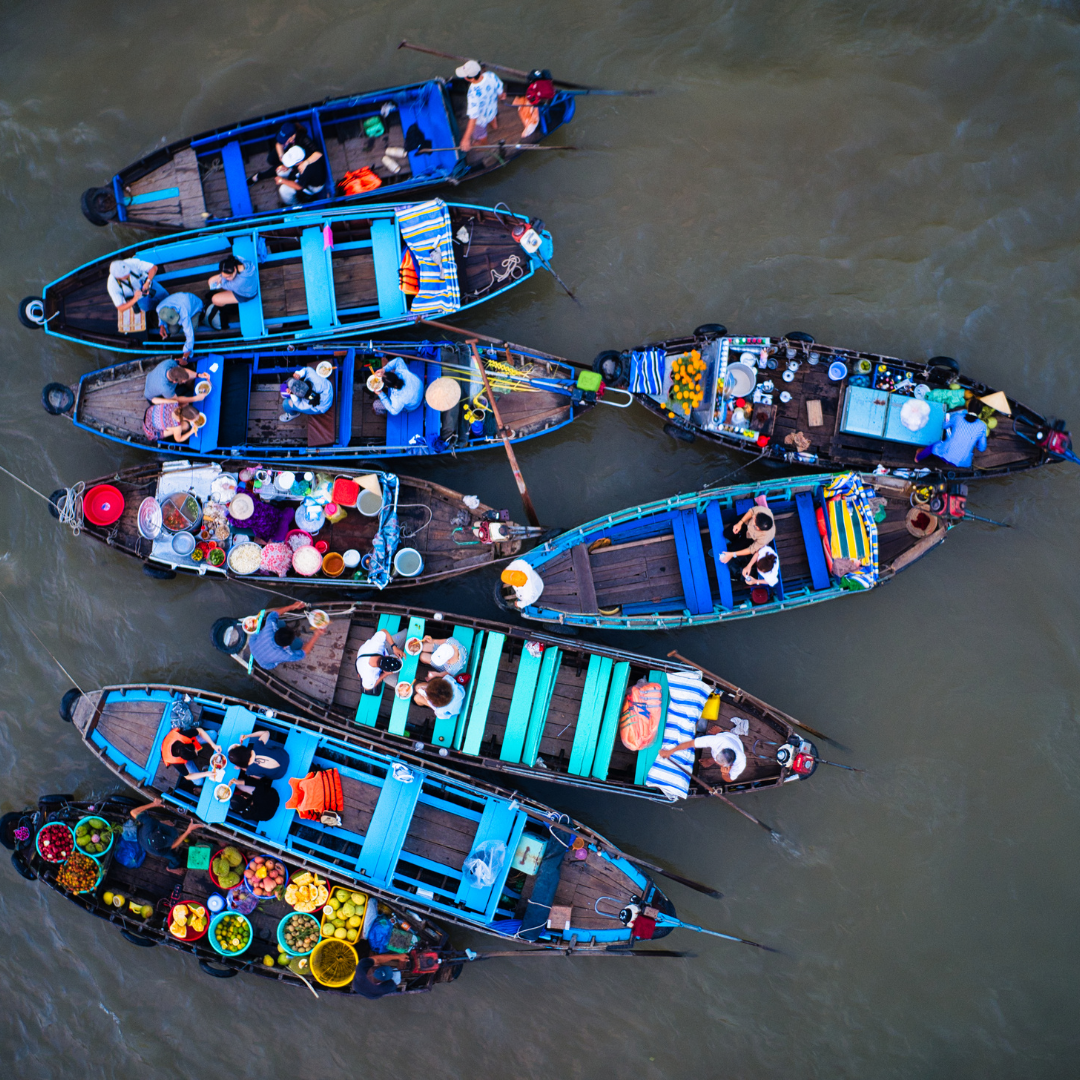Visiting Floating Markets by Boat: Sailing to Cai Rang and Cai Be

The Mekong Delta, with its sprawling network of rivers and tributaries, has long been the lifeline of southern Vietnam. This aquatic landscape has given rise to unique cultural and economic practices, none more iconic than the floating markets. These markets, held aboard boats and vessels of varying sizes, encapsulate the vibrancy, diversity, and resilience of delta life. Two of the most famous are Cai Rang and Cai Be, where life begins before the crack of dawn and transactions occur with a rhythm that’s been honed over centuries. As we embark on this journey, we’re not just exploring markets, but diving deep into a way of life that’s both timeless and in flux.
Waking Up Early: Capturing the Market’s Morning Bustle
While the rest of the world might still be enveloped in the arms of sleep, Cai Rang and Cai Be are already alive with action. As the first rays of sun pierce the horizon, boats start converging, laden with goods and produce. The air buzzes with a blend of diesel engines, human voices, and the gentle lapping of water against boat hulls. Waking up early not only offers a glimpse into the market at its peak activity but also presents a mesmerizing play of light and shadow, as the rising sun casts golden hues over the waterways.
Trading from Boat to Boat: The Unique Commerce of the Delta
Unlike stationary markets, the commerce here is dynamic. Transactions aren’t bound by solid ground. Sellers hoist samples of their goods on tall poles, giving buyers a clear view of what’s on offer even from a distance. Boats nudge closer, haggling ensues, and deals are sealed with a handshake or a nod. The agility and coordination required to ensure goods are transferred without toppling into the water is a skill acquired over years, a dance that’s both pragmatic and poetic.
Sampling Fresh Produce: Exotic Fruits and Local Specialties
The delta’s fertile soil and tropical climate ensure an abundance of fruits and vegetables, many of which might seem exotic to the uninitiated. Rambutans, mangosteens, and the pungent durian jostle for space alongside more familiar produce like pineapples and bananas. Each boat is like a floating orchard, offering visitors a chance to sample and purchase. The freshness is unparalleled, with many fruits plucked just hours before they reach the market.
Floating Kitchens: Tasting Cooked Dishes on the Water
It’s not just raw produce that’s on offer. Interspersed between fruit and vegetable vendors are floating kitchens, dishing out local delicacies. From steaming bowls of pho to grilled seafood, these boats serve freshly cooked meals to vendors and visitors alike. The experience of savoring a hot dish, with the water beneath and the open sky above, is a sensory delight, connecting one profoundly to the surroundings.
A Photographer’s Dream: Capturing Colors and Life
The floating markets are a visual feast. The vibrant hues of fruits contrast beautifully with the earthy tones of wooden boats. People, in their conical hats, add a human touch to this tableau, their faces telling stories of hardships and hopes. Every frame captures a blend of motion and stillness, commerce and culture, tradition and modernity. It’s a place where even the most amateur photographers can feel inspired and where every click tells a story.
The Changing Landscape: Modernization and its Impact on Floating Markets
Change is the only constant, and the floating markets aren’t immune. Modernization, with its improved road networks and changing economic dynamics, poses challenges. Many young people are migrating to cities, seeking opportunities beyond the confines of boats. There’s an increasing push for fixed markets, which promise more stability but lack the charm and heritage of their floating counterparts. It’s a delicate balance, preserving tradition while embracing progress.
Tips for Responsible Visitation and Cultural Respect
Visiting the floating markets isn’t just about sightseeing; it’s about immersing oneself in a living culture. It’s crucial to approach the experience with respect. Negotiate prices fairly, understanding the hard work that goes behind sourcing and selling. Limit plastic usage, ensuring the delta’s waters remain clean. Engage with locals, not as subjects of exotic fascination, but as individuals with their dreams, struggles, and stories. A responsible visitor not only takes memories but also leaves a positive imprint behind.
The floating markets of Cai Rang and Cai Be are more than just economic hubs; they are a testament to Vietnam’s adaptability, resilience, and enduring connection to its waterways. As we sail away from the hustle and bustle, the echoing calls of vendors, the vibrant panorama of boats, and the taste of fresh fruits linger, reminding us of a world where commerce, culture, and community seamlessly intertwine. In these markets, Vietnam floats, not just on water, but on a rich tapestry of history, tradition, and indomitable spirit.


